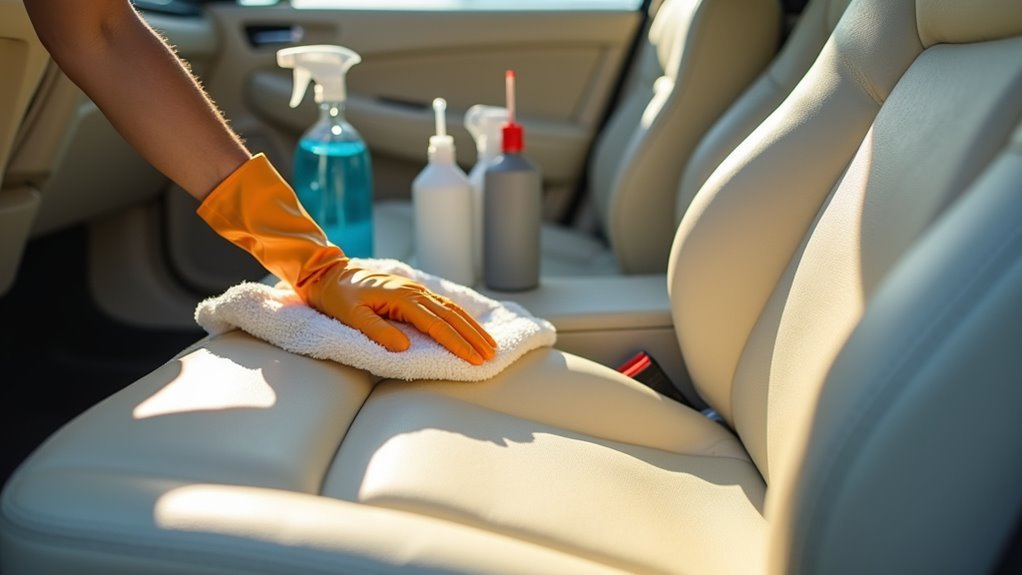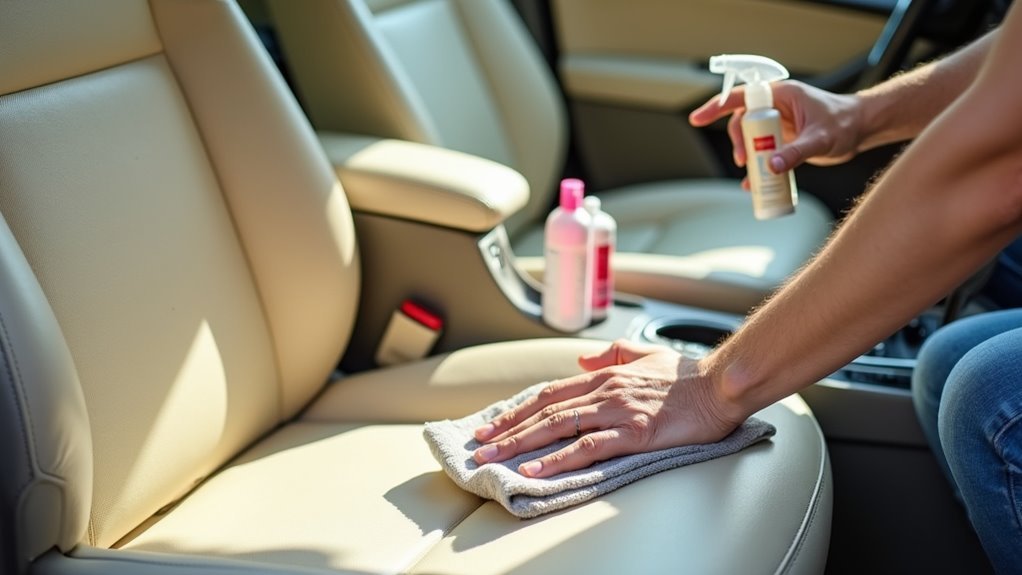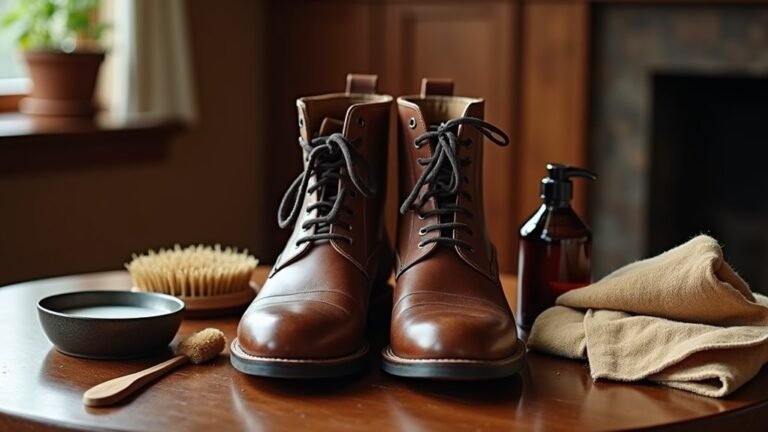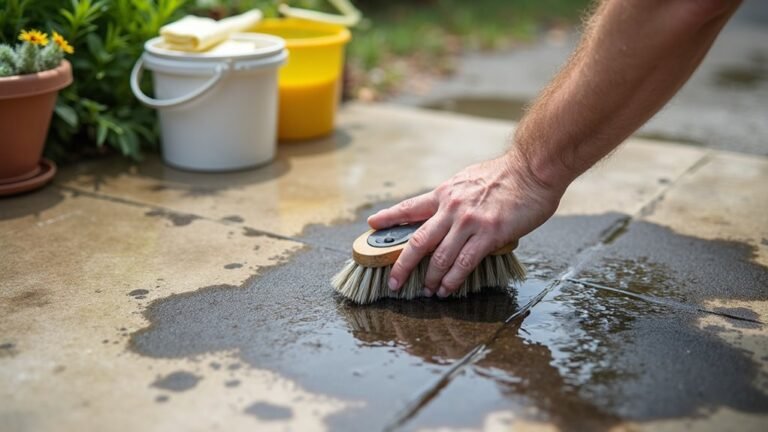Leather car seats need regular cleaning and care to stay looking good. Most of us want our car's inside to look nice, but taking care of leather seats can be tricky. While it's tempting to use quick fixes or strong cleaning products, these can actually damage your seats. Let's learn the best way to clean leather seats to keep them soft and looking great for a long time.
Some of the links in this article may be affiliate links. If you make a purchase through these links, we may earn a small commission at no extra cost to you. Thank you.
According to Mike Pennington, Director of Training at Meguiar's, "The biggest mistake people make is using household cleaners on their leather seats. These products can strip away the protective coating and dry out the leather, leading to cracks and damage."
Protect Your Investment First

While leather car seats add elegance and value to your vehicle, they require proper care to maintain their beauty and durability.
To protect the leather and prevent cracking, we recommend applying a quality leather conditioner with UV protection regularly.
Let's establish a regular cleaning schedule every 2-3 months, keep microfiber towels handy for spills, and consult our owner's manual for proper products and cleaning solutions.
Let's look at what we should and shouldn't do when cleaning our leather car seats to keep them in pristine condition.
By following proper cleaning techniques and avoiding harsh chemicals, we'll maintain the leather's natural beauty while extending its lifespan.
We'll break down the essential steps and share some final thoughts to help you care for your leather seats like a pro.
Things to Do When Cleaning Leather Car Seats
Properly cleaning leather car seats requires attention to detail and the right technique to maintain their appearance and extend their lifespan. The process involves multiple steps that must be performed in the correct order, using appropriate materials and cleaning solutions to prevent damage while effectively removing dirt and grime from the leather surface.
- Remove debris – Clear away any visible items, trash, or loose particles to prevent scratching during cleaning.
- Vacuum thoroughly – Use attachments to reach deep into seams and perforations for complete dirt removal.
- Test cleaning solution – Apply product to hidden area first to verify compatibility with leather.
- Clean with microfiber – Work in small sections using circular motions with a dampened cloth.
- Allow drying time – Let seats dry completely before conditioning or using the vehicle.
- Apply leather conditioner – Protect and maintain leather's natural oils and flexibility.
- Monitor pressure – Use gentle, consistent pressure to avoid damaging the leather surface.
- Work systematically – Clean one section at a time to guarantee thorough coverage.
- Check results – Inspect cleaned areas for missed spots or areas needing extra attention.
- Regular maintenance – Establish routine cleaning schedule to prevent deep soil buildup.
Things to Avoid When Cleaning Leather Car Seats
When cleaning leather car seats, it's crucial to understand that using the wrong cleaning methods or products can cause permanent damage to the material.
Leather is a natural, porous material that requires gentle care and specific cleaning solutions designed for automotive use. Improper cleaning techniques can strip away protective coatings, dry out the leather, or cause unsightly stains and discoloration that may be impossible to reverse.
Bleach and ammonia cleaners – These harsh chemicals break down leather's natural oils and protective coatings, leading to cracking and discoloration.
Homemade acidic solutions – Vinegar, lemon juice, or other acidic mixtures strip away essential oils and damage the leather's surface structure.
Petroleum-based products – These leave behind greasy residues and gradually deteriorate the leather's integrity.
Car wax – Clogs leather pores and perforations, preventing proper ventilation and potentially trapping moisture.
Excessive water – Too much moisture can seep into the leather, promoting mold growth and causing the material to warp or rot.
Abrasive scrubbers – Rough sponges, brushes, or cloths can scratch and permanently mar the leather's surface.
Direct heat sources – Using hair dryers or heat guns to dry leather can cause shrinkage and cracking.
All-purpose cleaners – Generic cleaning products often contain harmful chemicals that can damage leather's finish and structure.
Steps
Maintaining clean leather car seats is essential for preserving both the appearance and value of your vehicle. Proper cleaning not only removes dirt and stains but also helps prevent wear and tear while extending the life of the leather.
Following a systematic approach guarantees thorough cleaning without risking damage to the delicate material.
Step 1: Remove debris and vacuum seats thoroughly, focusing on crevices
Step 2: Test leather cleaner on an inconspicuous area
Step 3: Apply cleaning solution with a soft-bristled brush using circular motions
Step 4: Wipe seats with a damp microfiber towel to remove residue
Step 5: Dry thoroughly with a clean towel
Step 6: Apply leather conditioner in circular motions
Step 7: Allow conditioner to air dry for at least one hour
Final Thoughts
Taking good care of leather car seats isn't rocket science, but it does require attention to detail and the right approach.
We recommend deep cleaning your seats every few months using proper leather cleaning solutions and a microfiber cloth.
Remember to condition after cleaning to maintain the leather's integrity, and always perform a spot test before trying new products to prevent damage.
With consistent care, your seats will stay beautiful for years.

Maintaining clean and conditioned leather car seats is a straightforward process that pays off in the long run. Regular cleaning every few months prevents permanent damage and keeps your car's interior looking luxurious.
By following proper cleaning techniques – using appropriate products, testing solutions first, and being gentle with the leather – you can extend the life of your seats considerably.
The key is consistency and using the right tools. Keep a leather care kit in your garage with microfiber cloths, a soft brush, quality leather cleaner, and UV-protective conditioner.
Your investment in proper leather care will maintain your vehicle's value and provide you with comfortable, attractive seats for years to come.
Take action today – set a regular cleaning schedule and stick to it. Your leather seats represent a considerable investment in your vehicle, and protecting them is easier than dealing with damaged leather later.
Start with a thorough cleaning session now, and make leather care a regular part of your vehicle maintenance routine.






